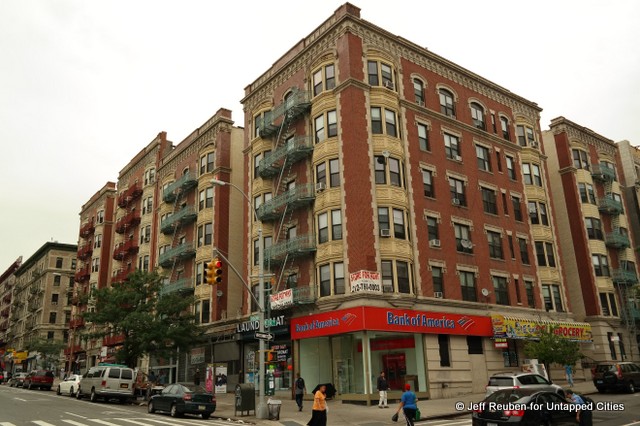
Although often overlooked, Washington Heights, in upper Manhattan, contains one of New York City’s great concentrations of pre-war apartment house buildings, including many that retain much of their original architectural grandeur.
The pre-war apartment house, one of the mainstays of New York City architecture, is strongly associated with certain Manhattan neighborhoods, including the Upper East and West Sides, Morningside Heights, and various enclaves south of 59th Street. However, Washington Heights, perhaps more than any neighborhood, is architecturally defined by the pre-war apartment house.
Pre-war buildings are celebrated for their spacious apartments, thick walls, high ceilings, and architectural detailing. Pre-wars are usually thought of as the large, mid-rise buildings with elevators that were built for middle class or wealthy tenants prior to World War II. As such, the term pre-war is not typically applied to rowhouses or walk-up tenements also built before the war.
While the oldest pre-war buildings in New York date from the nineteenth century, it was not until the early 1900s, with changes in taste and building technology that this type of building was built widely. This also coincided with the opening of the subway system, which greatly reduced travel times across the City, making outlying areas attractive for new development.
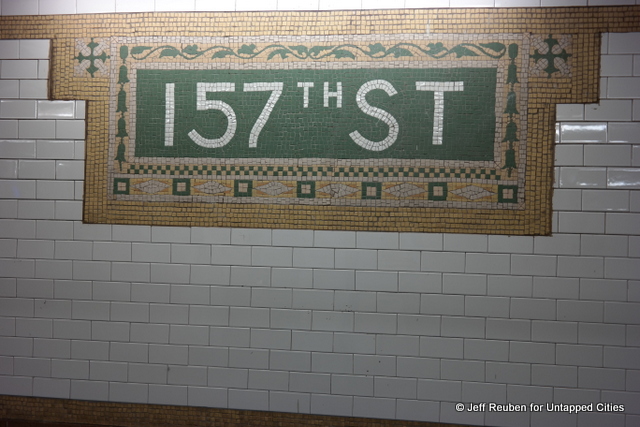 The opening of the City’s first subway line was the catalyst for Washington Heights’ apartment house building boom
The opening of the City’s first subway line was the catalyst for Washington Heights’ apartment house building boom
In the case of Washington Heights, it remained relatively rural until the early twentieth century. When the City’s first subway line opened in 1904 with stations along Broadway at 145th Street and 157th Street, and a few years later at 168th Street, 181st Street, and 191st Street, a building boom followed. As The New York Times put it succinctly in a 1911 headline, “Rows of Apartment Houses Wiping Out Old-time Washington Heights Estates.”
These early twentieth century apartment houses were designed in Beaux-Arts and other architectural styles that emphasized symmetrical facades with ornate architectural details inside and out. (In a later wave of building between the word wars other styles including Art Deco and Tudor became more prevalent.)
These early pre-war apartment houses of Washington Heights generally are not considered the architectural equals of more famous and elaborate buildings further south, such as the San Remo and the Ansonia, and in some cases their architectural details are not as well preserved as buildings in more affluent areas. However, given the size and diversity of its inventory, Washington Heights should be synonymous with pre-war architecture.
Washington Heights pre-war apartment houses are also important historically, as they originally housed thousands of middle class residents and later in many cases became the homes of new immigrants as Washington Heights evolved into an entrepôt for new arrivals.
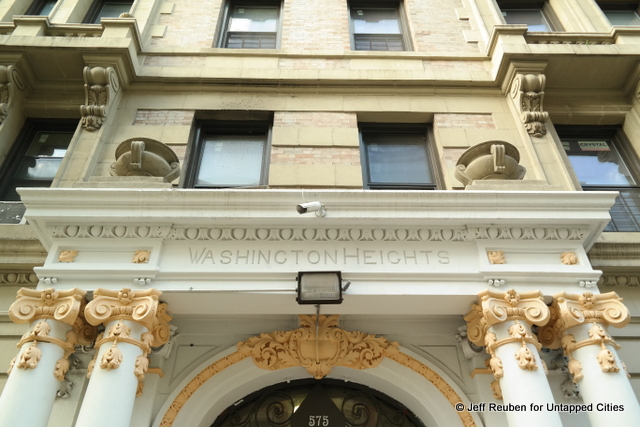
Here are ten notable examples of Washington Heights pre-war buildings constructed during the great apartment house boom of the early 1900s.
10. The Washington Heights
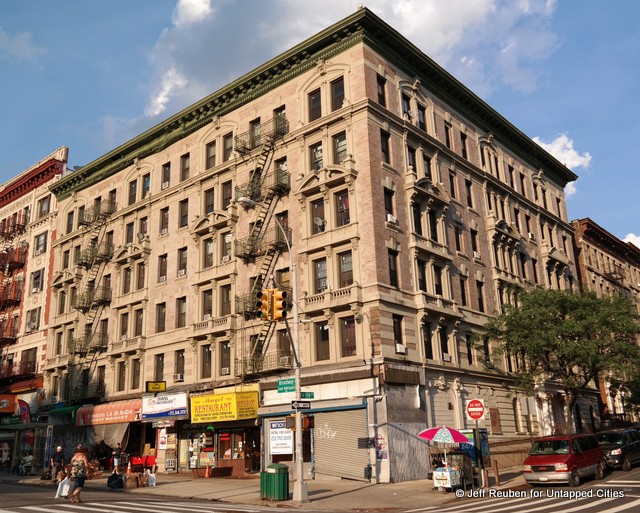
Appropriately, we start with a building named for the neighborhood and which exemplifies Washington Heights’ architectural character. The Washington Heights, at Broadway and West 159th Street, was completed in 1908. It was one of the area’s first apartment houses to be constructed following the opening of the subway in 1904. The photo from the building’s listing shows wide open lots nearby. They did not remain vacant for long.
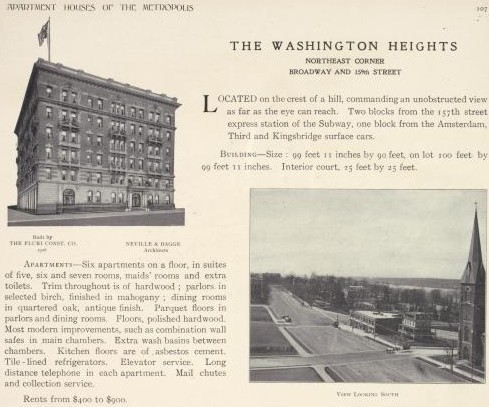 “Apartment Houses of the Metropolis,” 1908, via Irma and Paul Milstein Division of United States History, Local History and Genealogy, The New York Public Library
“Apartment Houses of the Metropolis,” 1908, via Irma and Paul Milstein Division of United States History, Local History and Genealogy, The New York Public Library
Incidentally, the church at the right in the listing photo was the Church of the Intercession, which a few years later moved to a new building located a few blocks to the south on the grounds of Trinity Cemetery.





